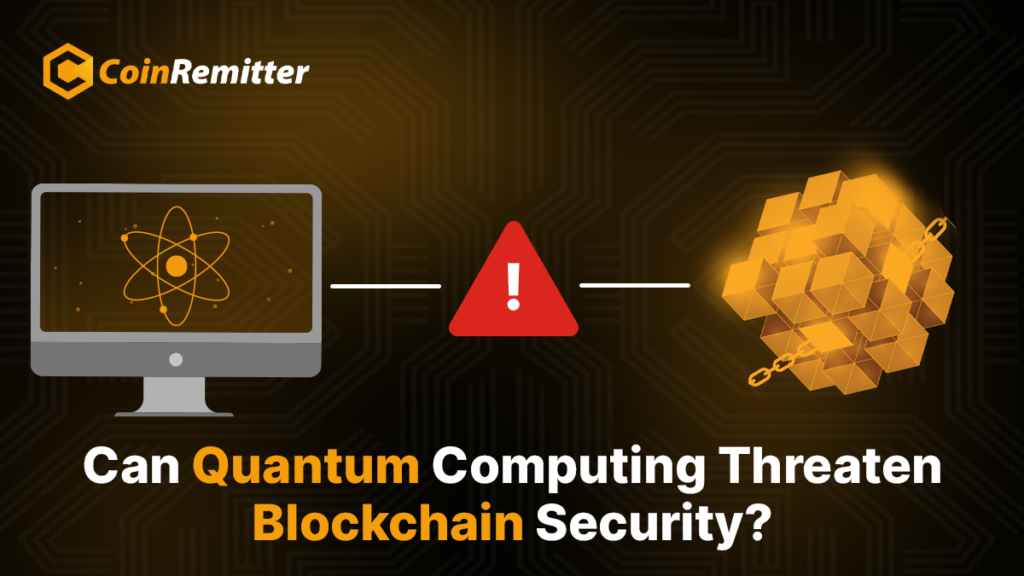Blockchain technology has become an essential technological advancement for secure online crypto transactions and data management. It works by using strong cryptographic techniques to ensure that information stays safe, transparent, and trustworthy. However, the rapid advancements in quantum computing pose a big challenge to security systems and blockchain technology is feeling the impact of it.
This blog will address the important question: Is quantum computing a threat to blockchain security?
Let’s start by understanding what quantum computing is.
Quantum Computing
It’s an emerging technology that looks at vast amounts of information and finds solutions to tough questions quickly. While classical computers use bits that are either 0 or 1, quantum computers use qubits. Qubits hold information in a special manner that involves both 0 and 1 at the same time, allowing them to consider many possibilities at the same time.
Now, let’s understand what blockchain security is.
Blockchain Security
Blockchain security refers to using cybersecurity methods to protect against attacks and fraud when using blockchain networks. It also depends on a consensus among network participants to validate new information, preventing false or unauthorized data. Security in blockchain involves using advanced cryptography to keep data protected.
Blockchain’s decentralized nature makes it difficult to attack the network. Once the data is stored on a blockchain, it is nearly impossible to change it.
Now that we know what they are, let’s look at how quantum computing can impact blockchain security.
How Quantum Computing Can Affect Blockchain?
Shor’s Algorithm:
The emergence of quantum computing can pose a serious threat of breaching the existing security measures. Quantum computers have the potential to break public key cryptographic algorithms such as RSA and Elliptic Curve Cryptography (ECC) by using Shor’s algorithm. This algorithm allows a quantum computer to efficiently factor large integers and compute discrete logarithms, which are the foundational problems underlying the security of these cryptographic systems.
Attacks like these can affect the current cryptographic foundation on the blockchain, paving the way to further serious attacks.
Grover’s Algorithm:
While symmetric key cryptography is generally more resistant to quantum attacks, hash functions like SHA-256 are vulnerable to Grover’s algorithm. This algorithm provides a quadratic speedup in finding hash collisions, making it easier for quantum computers to reverse-engineer hash values and potentially disrupt blockchain consensus mechanisms.
With consensus mechanisms compromised, the integrity and reliability of blockchain networks could be affected, leading to broader security concerns.
Double-Spending Attacks:
Quantum computers could enable sophisticated double-spending attacks by quickly altering transaction histories or creating conflicting transactions, undermining trust in the blockchain. The increased computational power of quantum computers can be used to manipulate transaction validation processes, potentially allowing malicious entities to validate fraudulent transactions.
This threat to transaction integrity directly challenges the security model of blockchain technology.
Network Security Risks:
Quantum computers could potentially be used to break into individual nodes within a blockchain network, gaining control over them and disrupting network operations. This could lead to a loss of decentralization, one of the core principles of blockchain technology.
Solutions for Securing Blockchain Technology
Post-quantum Cryptography:
Post Quantum Cryptography (PQC) is a way to protect blockchain technologies from attacks by quantum computers. It uses methods like lattice-based encryption, hash functions, and identity-based encryption. Some innovations include creating digital signature schemes with smaller key sizes and developing hybrid systems like PQFabric for Hyperledger, which provide both quantum security and flexibility in using different cryptographic methods.
Quantum-Resistant Cryptography:
To counter the threats of quantum computing, implementing quantum-resistant cryptography is a smart option. These algorithms are designed to be secure against quantum attacks, as they use math problems that are too difficult for quantum computers to solve. Replacing current methods with this can keep blockchain transactions and data safe from quantum threats.
Quantum Key Distribution:
Quantum Key Distribution (QKD) uses quantum physics to create secure communication channels. It allows encryption keys to be shared with very high security. Adding QKD to communication channels can protect sensitive data from quantum attacks.
Quantum-Resistant Smart Contracts:
Smart contracts are important in blockchain systems. To protect them from quantum threats, developers can create quantum-resistant programming languages and tools for smart contracts. These are designed to keep blockchain applications secure.
The Road Ahead
While quantum computing’s ability can potentially affect current cryptography security measures, it’s important to recognize that this technology could also bring opportunities. For example, quantum key distribution (QKD) offers a very secure method to exchange encryption keys. This could enhance the overall security of blockchain systems in the future.
Conclusion
While quantum computing poses a threat to blockchain security, the technology is still in its early stages. Blockchain developers and researchers are actively preparing for this future by exploring new cryptographic approaches and potential transition plans. As quantum computing continues to advance, so do the blockchain networks to ensure secure and reliable transactions in the future.

